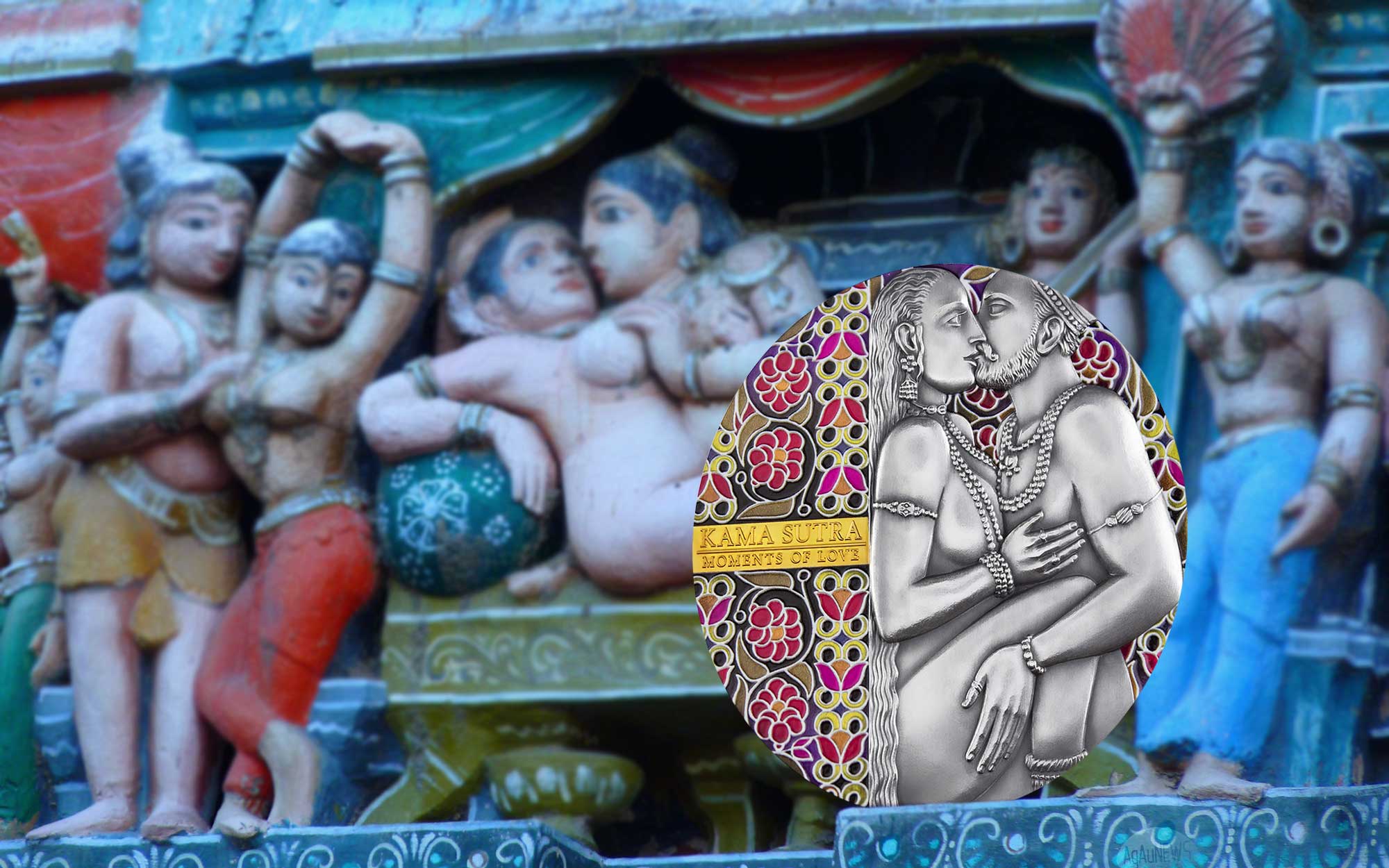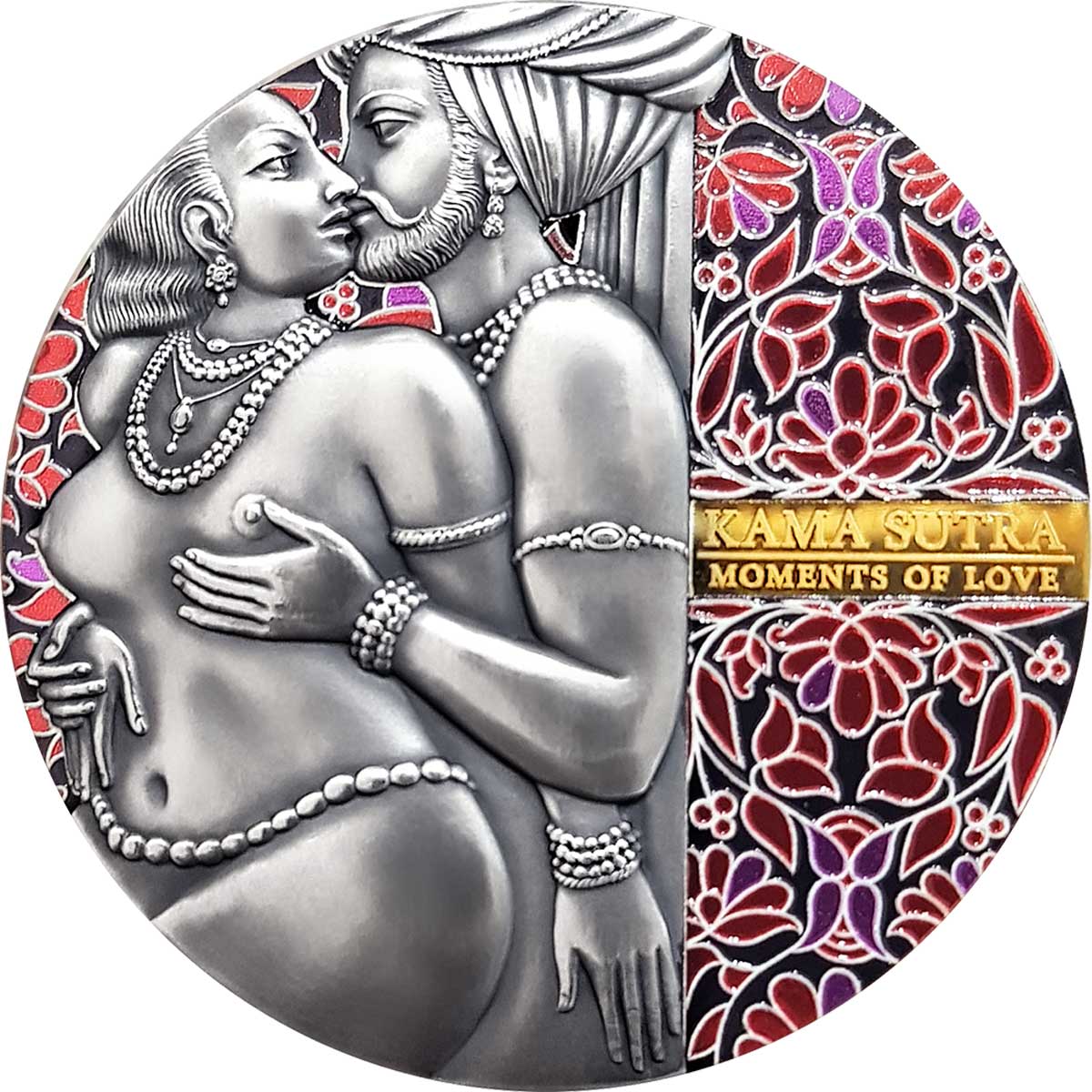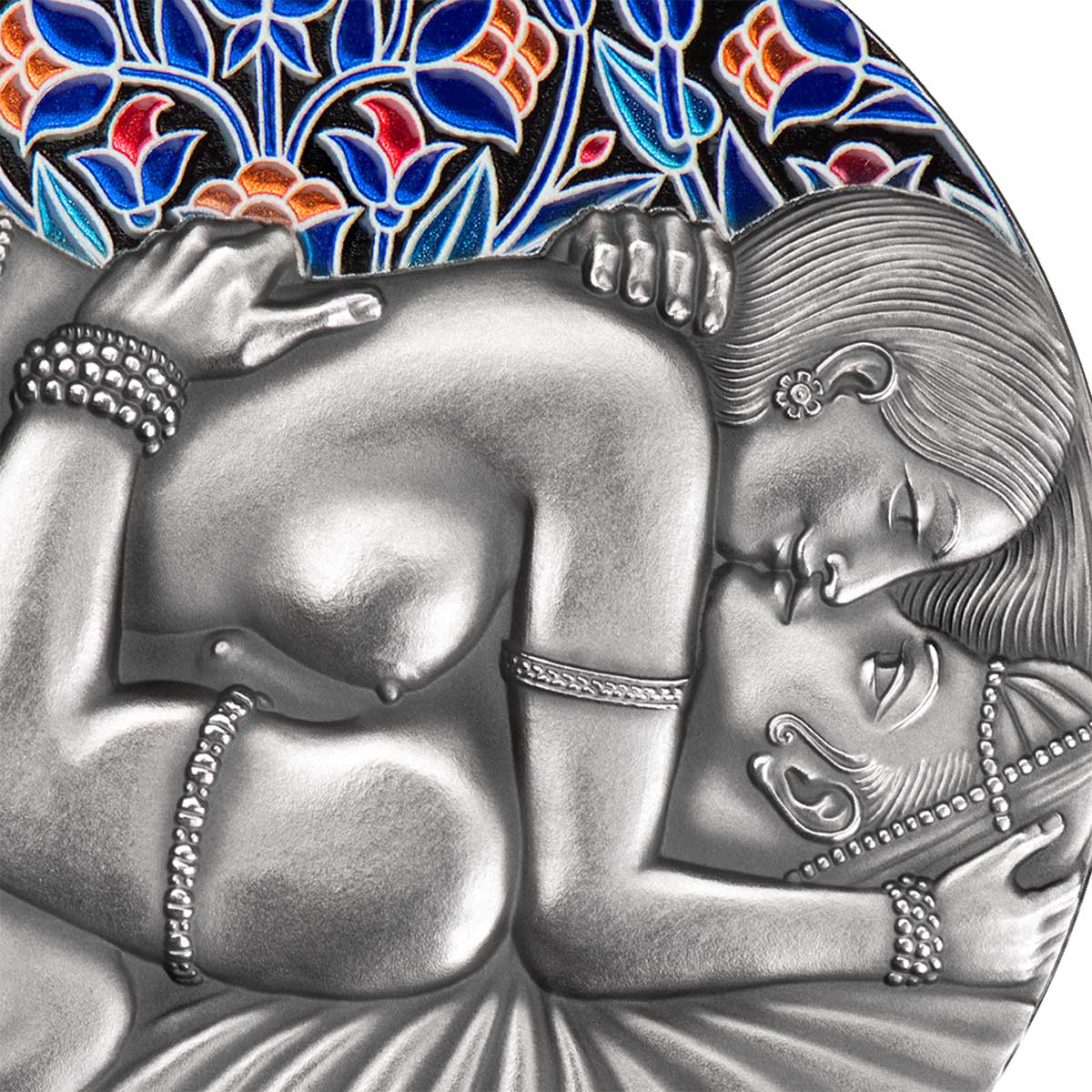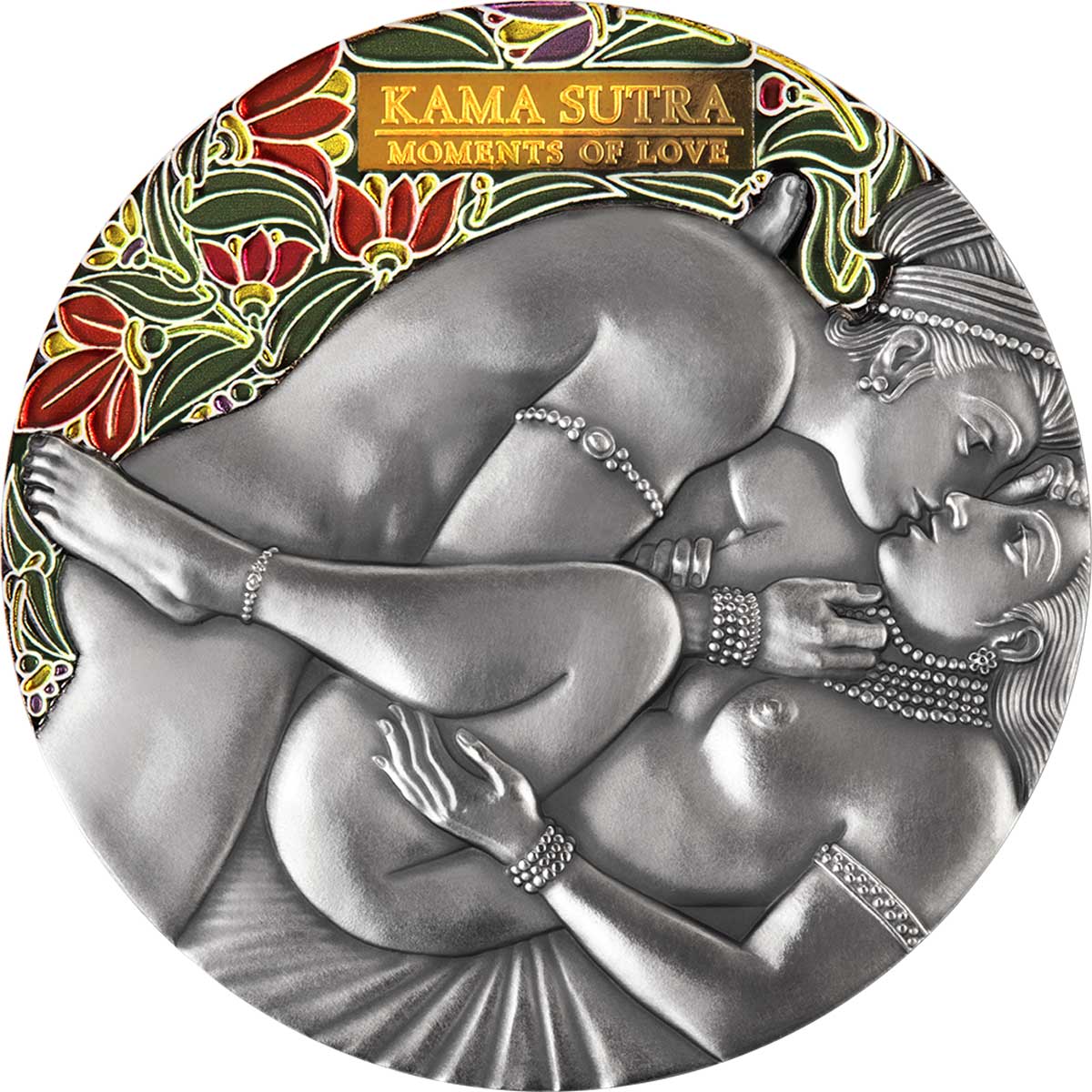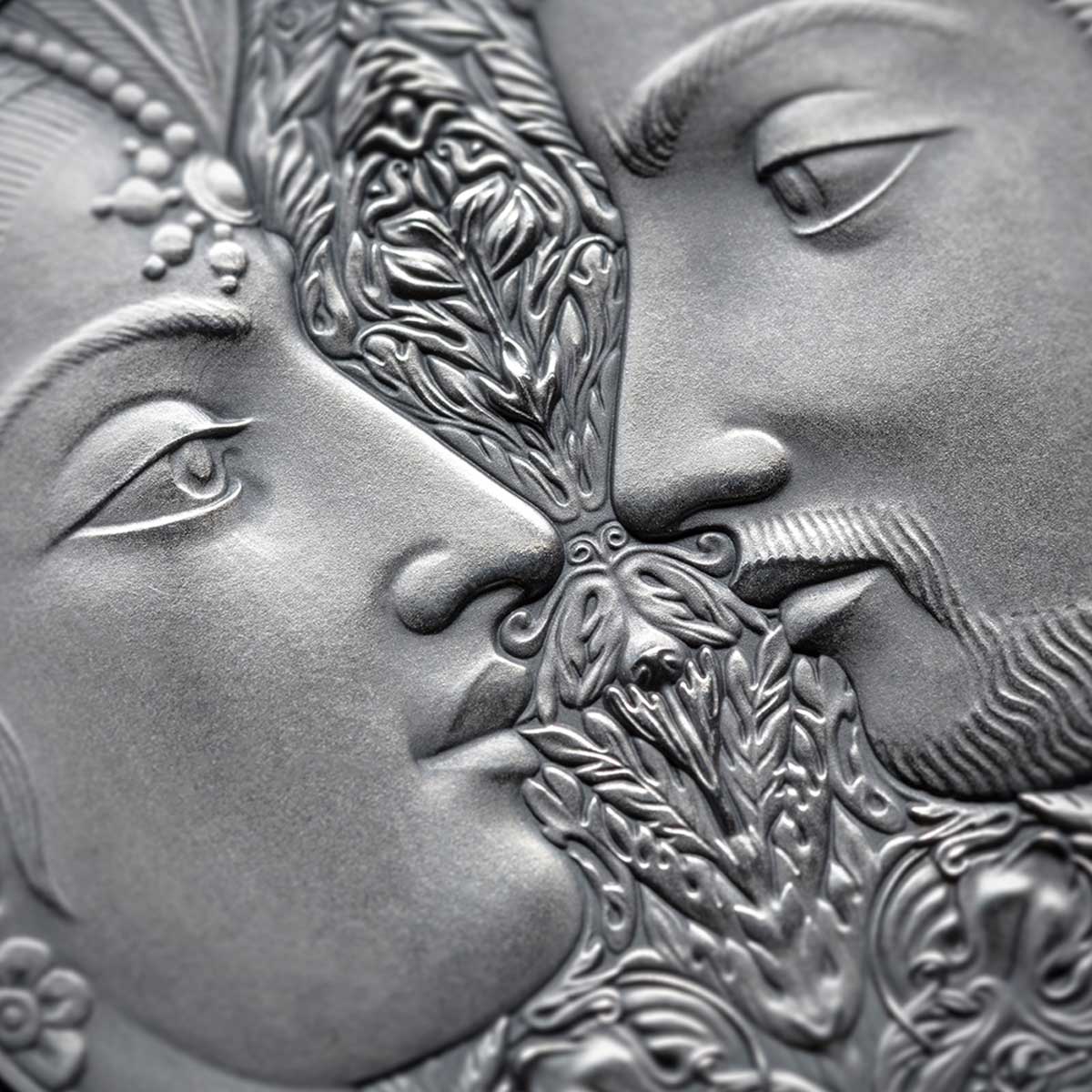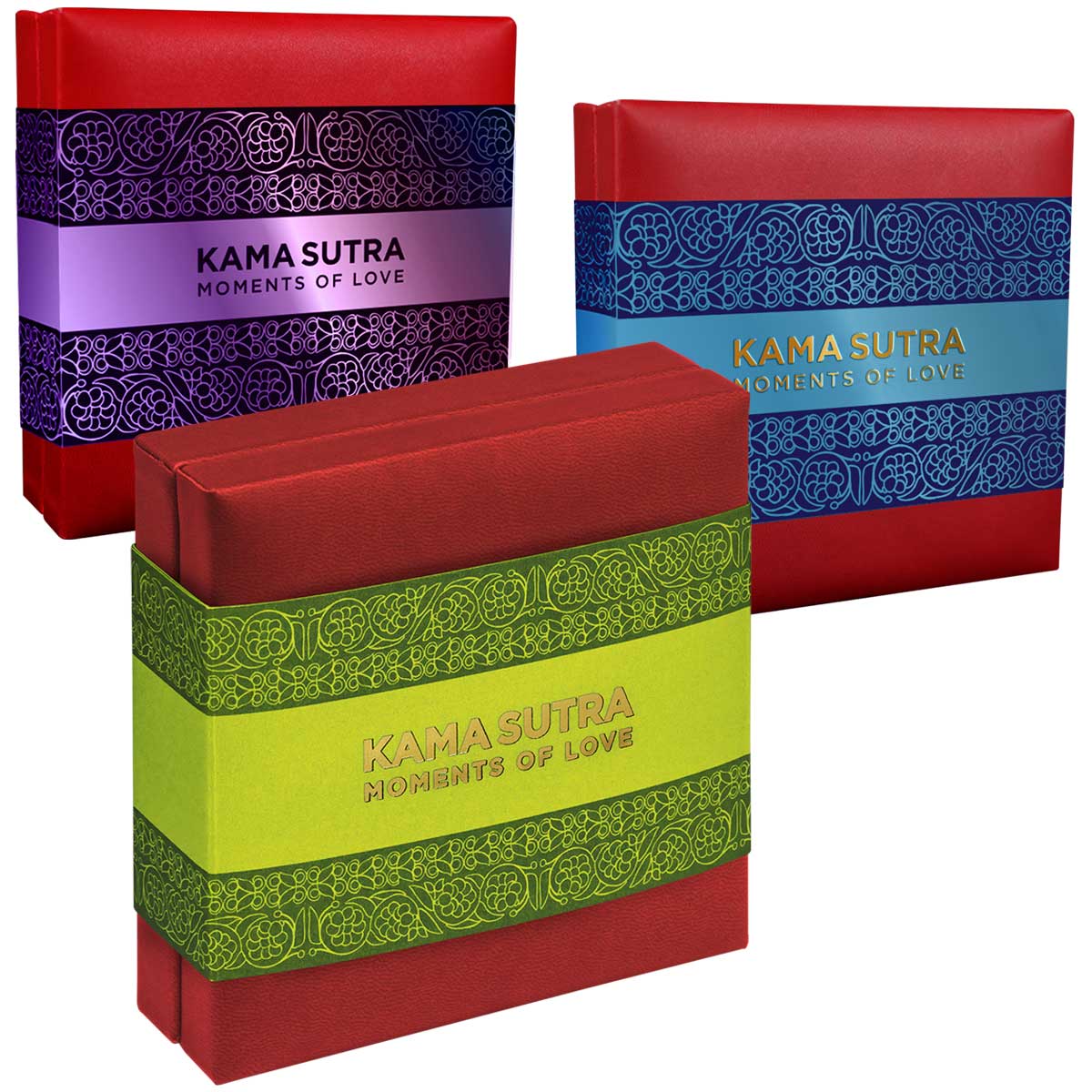MOMENTS OF LOVE (2019) by Mint XXI
It isn’t often we see a subject like sex featured in its own coin series. Hinted at perhaps, but not front and centre (no pun intended…). If you’re going to do it respectfully, then showcase the classic text on the subject, the Indian work, Kama Sutra. This is an ancient text, tracing its roots back well over 2,000 years, and sets out the ways to garner maximum pleasure from the act of procreation.
Mint XXI is no stranger to nudity on its coins, offering some superb examples of ancient and Renaissance art, like its ‘Celestial Beauty’ series, which aren’t afraid to depict their subjects in their original, unsanitised form. Here, however, the producer has created a style fully sympathetic with the original script, one that’s very Indian in nature, full of patterned flourishes, and jewellery in the local style.
The background is brightly coloured, in a way that was possibly the inspiration for Mint XXI’s later ‘Stained Glass Art’ series. It’s varied, but has one colour more prominent than the others, which is different for each year’s issue. The title of the series is highlighted with gilding, and the figures are antiqued. The couple on each coin are depicted in a different position, and we could be imagining it, but they seem to be getting a little raunchier as the series progresses.
A very well crafted three-ounce silver coin series, stylistically spot-on, with a good use of high-relief. Not a subject for everyone, of course, but if it is, we’re sure this will appeal. Issued one per year, the 2022 has just debuted at the time of writing.
The Kama Sutra is an ancient Indian Sanskrit text on sexuality, eroticism and emotional fulfilment in life. Attributed to Vātsyāyana, the Kama Sutra is neither exclusively nor predominantly a sex manual on sex positions, but written as a guide to the “art-of-living” well, the nature of love, finding a life partner, maintaining one’s love life, and other aspects pertaining to pleasure-oriented faculties of human life.
Kama Sutra is the oldest surviving Hindu text on erotic love. It is a sutra-genre text with terse aphoristic verses that have survived into the modern era with different bhasya (exposition and commentaries). The text is a mix of prose and anustubh-meter poetry verses. The text acknowledges the Hindu concept of Purusharthas, and lists desire, sexuality, and emotional fulfilment as one of the proper goals of life. Its chapters discuss methods for courtship, training in the arts to be socially engaging, finding a partner, flirting, maintaining power in a married life, when and how to commit adultery, sexual positions, and other topics. The majority of the book is about the philosophy and theory of love, what triggers desire, what sustains it, and how and when it is good or bad.
The text is one of many Indian texts on Kama Shastra. It is a much-translated work in Indian and non-Indian languages. The Kamasutra has influenced many secondary texts that followed after the 4th-century CE, as well as the Indian arts as exemplified by the pervasive presence Kama-related reliefs and sculpture in old Hindu temples. Of these, the Khajuraho in Madhya Pradesh is a UNESCO World Heritage Site. Among the surviving temples in north India, one in Rajasthan sculpts all the major chapters and sexual positions to illustrate the Kama Sutra.
According to Wendy Doniger, the Kama Sutra became “one of the most pirated books in the English language” soon after it was published in 1883 by Richard Burton. This first European edition by Burton does not faithfully reflect much in the Kamasutra because he revised the collaborative translation by Bhagavanlal Indrajit and Shivaram Parashuram Bhide with Forster Arbuthnot to suit 19th-century Victorian tastes. The original composition date or century for the Kamasutra is unknown. Historians have variously placed it between 400 BCE and 300 CE. According to John Keay, the Kama Sutra is a compendium that was collected into its present form in the 2nd century CE. (Courtesy of Wikipedia)
The obverse is a close up face-to-face portrait of the couple depicted in the coins, with an intricate pattern between the two. A border surrounds the artwork which contains the issue details (denomination, issuer, date) and all is antique finished. The design is common to the series.
Packaging consists of a red ‘snapper’ box with a white lining. The design is common to the series, although the slipband around each issue is differently coloured. It holds a Certificate of Authenticity.


